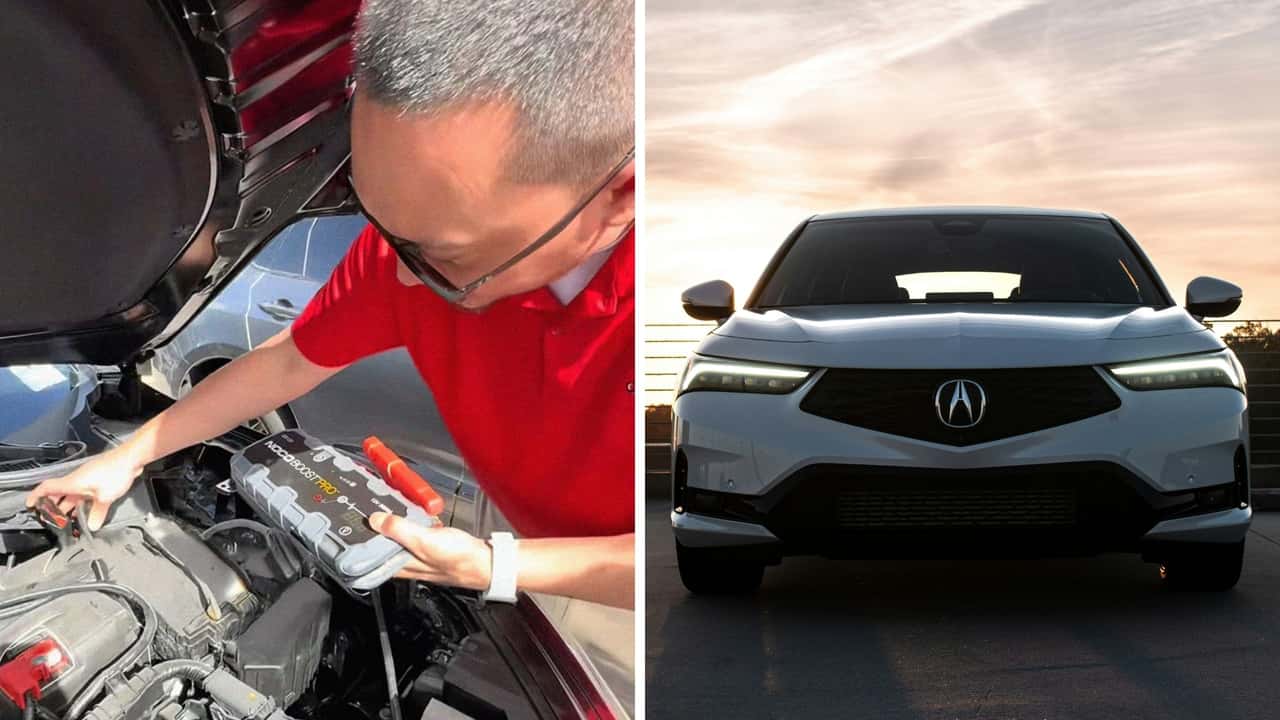“Car got jokes.”
A lifeless battery is a common car problem. Jump-starting a vehicle seems like a straightforward fix.
But as one dealership employee learned the hard way, connecting jumper cables in the wrong order can lead to alarming consequences.
In a viral video, a man who works at a Las Vegas Acura dealership (@cardinalecars) attempts to jump-start an Acura, but the procedure doesn’t go as planned. The man can be heard explaining his setup as he attaches the cables.
“So your negative goes to the ground wire here. And your positive—put that,” he says in the video.
After connecting the cables and turning on the equipment, a loud honking noise immediately starts.
“POV: Jump start gone wrong…” they add in the caption.
Jump-starting a car requires following a specific order to avoid damaging the vehicle’s electrical system, blowing fuses, or creating dangerous sparks.
Viral stories from across the web
Our team of experts tracks what owners are saying about car-shopping, repairs, the daily driving experience and more on social media.
According to Kelley Blue Book, connecting jumper cables in the wrong order can result in personal injury or damage to sensitive electrical components.
The correct sequence for connecting jumper cables is crucial. Batteries Plus emphasizes that you should always connect the positive terminal first when jump-starting a car. Here’s the proper order:
Step 1: Connect the red (positive) cable to the positive terminal on the dead battery. The positive terminal is marked with a “+” sign and often has a red plastic cover. This should always be your first connection.
Step 2: Connect the other end of the red cable to the positive terminal on the working battery. Again, look for the “+” marking.
Step 3: Connect the black (negative) cable to the negative terminal on the working battery. The negative terminal is marked with a “-” sign.
Step 4: Connect the final black cable to an unpainted metal surface on the car with the dead battery, not the negative terminal. This is a critical safety step. According to Edmunds, you should attach this clamp to an unpainted bolt or bracket that’s at least several inches away from the dead battery. This grounds the connection and reduces the risk of sparks near the battery.
Why not connect directly to the negative terminal on the dead battery? Car From Japan explains that batteries produce hydrogen gas during the jump-start process. If a spark occurs near the battery terminals, it can cause an explosion. By grounding the final negative connection to a metal surface away from the battery, you minimize this risk.
After the cables are properly connected, start the working vehicle and let it run for a few minutes before attempting to start the dead car. Once the dead car starts, remove the cables in the exact reverse order: black clamp from the jumped car’s ground, black clamp from the booster car, red clamp from the booster car, and finally red clamp from the jumped car.
Kelley Blue Book notes that removing the cables in the wrong order can create sparks and lead to electrical surges that damage sensitive components or blow fuses. It’s also important to keep the metal clamps from touching each other at any point during the process, as this can cause dangerous arcing.
“Don’t you put the positive cable on first?” a top comment reads.
“Bro this deserves soo many more likes lol,” another person said.
“Car got jokes noco be that quick,” wrote a third.
Motor1 reached out to the creator for comment via TikTok direct message and comment. We’ll be sure to update this if they respond.
What Owners Are Saying
We want your opinion!
What would you like to see on Motor1.com?
– The Motor1.com Team
